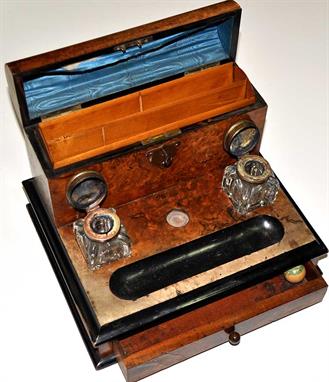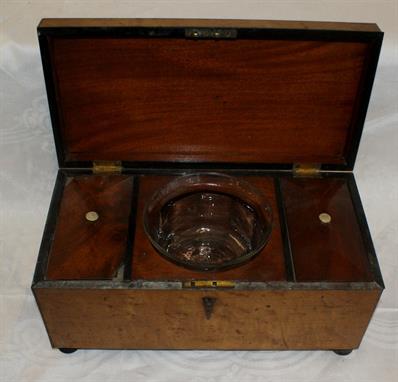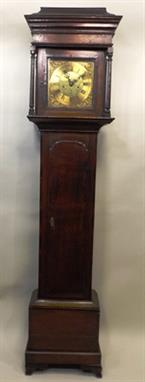A Victorian Tunbridge parquetry inlaid twin lock caddy on gilt ball and claw feet, sold together with a Victorian walnut casket with applied brass embellishments, an Edwardian mahogany with lightwood interior, having two compartments, each with lift up base flaps for secret papers, also included in lot a Russian lacquer box with pastoral scene to lid, signed. (4)
81699 Preisdatenbank Los(e) gefunden, die Ihrer Suche entsprechen
81699 Lose gefunden, die zu Ihrer Suche passen. Abonnieren Sie die Preisdatenbank, um sofortigen Zugriff auf alle Dienstleistungen der Preisdatenbank zu haben.
Preisdatenbank abonnieren- Liste
- Galerie
-
81699 Los(e)/Seite
Eardley Norton: a George III mahogany and brass mounted striking and musical bracket clock, the dial with foliate, scroll and flowerhead spandrels to the silvered roman and arabic chapter ring, the matted centre with date aperture, ornate pierced hands, the arch with silvered subsidiary dials for strike/not strike and chime/not chime and music section for tunes (March, Minuet, Song, Cotillion, March, Dance) centred by a recessed nameplate signed Eardley Norton London 2074, six pillar movement with triple fusee movement and verge escapement, hour strike on bell and music on thirteen bells with fifteen hammers, 5 1/4in. cylinder, two full repeat levers, the backplate engraved with leaves and scrolls around a cartouche signed Eardley Norton London, also numbered 2074 in top right corner, engraved securing brackets, the case with leaf and urn finial on fluted supports (damaged), caddy top flanked by four vase pattern finials, pierced brass foliate fretwork sides with material backing, brass handles, arched glazed front door with fretwork detail, fluted canted corners with brass detail, brass lined plinth base on brass bracket feet, 21in. high (not including detached finial and support). Eardley Norton is listed as working at Clerkenwell between 1762 and 1794. He was a member of the Clockmakers Company and had a reputation for making complex timepieces, sometimes with musical and astronomical movements for the export market. PROVENANCE Purchased by the vendor's grandfather William Strang, 1st Baron Strang (1893-1978) whilst Charge d'affaires at the British Embassy in Moscow 1930-1933. Thence by descent.
William Anthony, Truro: a mid 18th Century black lacquered longcase clock, the brass roman dial with arabic outer numerals, subsidiary seconds dial and date aperture to the matted centre, name boss to the arch, foliate spandrels, two train movement with anchor escapement, the case with caddy top, turned finials, glazed arched door flanked by columns, arched waist door, panel base on later raised skirting, the whole covered in chinoiserie designs, 92in. high, with weights and pendulum.
Richard Smith, Newport: a mahogany longcase clock, the arched brass dial with silvered roman chapter ring with outer arabic numerals, subsidiary seconds dial and date aperture to the matted centre, name boss to arch, two train movement with anchor escapement, case with caddy top above an arched door flanked by fluted columns with brass slips, shaped and moulded waist door flanked by fluted quadrants, panelled base on bracket feet, with weights.
A Victorian burr walnut and ebonised desk stand, the letter compartment with domed lid above cut glass inkwells, the base fitted with a drawer, 12 1/4in; a Victorian birdseye maple veneered rosewood and mother-of-pearl inlaid tea caddy, rectangular, the interior with two tea canisters and later glass bowl, 12in. wide; and a 19th Century mahogany and banded tea caddy, rectangular with later fitted interior and brass paw feet, 11in. wide. (3)
-
81699 Los(e)/Seite
























































